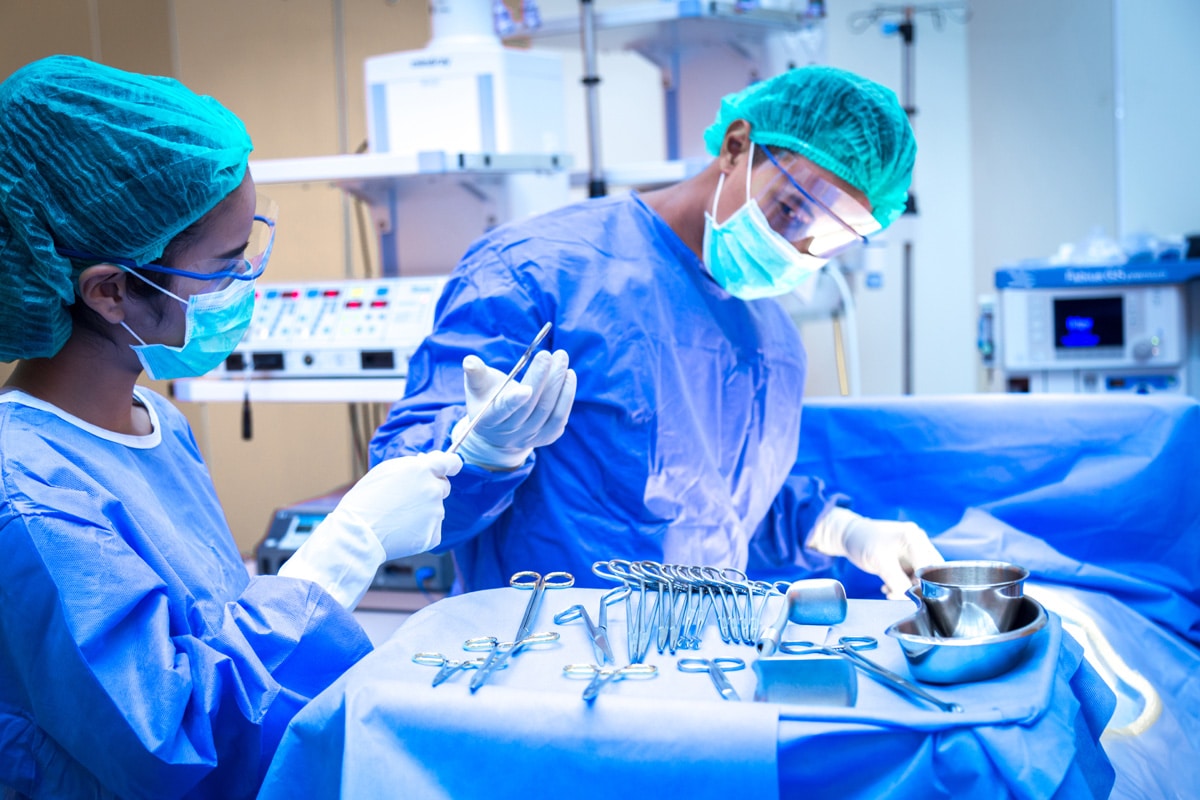Post coccygectomy pain is a frequent consequence of coccyx removal surgery, attributed to varied factors, including surgical nerve damage and post-operation healing trajectories. The pain experienced is often neuropathic and its intensity and duration can differ among patients. Several contributors, particularly surgical complications such as nerve damage and infection, or personal factors like previous chronic pain history and pain tolerance, impact pain levels. Identifying and treating postoperative pain involves diagnostic techniques, pharmaceutical interventions, physical therapies, and sometimes additional surgical procedures. Understanding these critical elements offers vital insights for effective pain management strategies post coccygectomy.
Understanding Coccygectomy Surgery
Coccygectomy, a surgical procedure that involves the removal of the coccyx or tailbone, is primarily pursued as a last resort treatment for severe, chronic coccydynia or tailbone pain that has not responded to nonsurgical interventions. Analyzing the coccyx anatomy is of paramount importance in executing this procedure accurately. The coccyx is the terminal segment of the vertebral column comprising three to five fused vertebrae. Although tiny and seemingly insignificant, it serves as an integral attachment site for multiple muscles, tendons, and ligaments, playing an essential role in human locomotion and support.
Consequently, a coccygectomy is a complex procedure that comes with its share of surgery risks. These include infection, hematoma, wound dehiscence, rectal injury, and the possibility of persistent or worsened pain post-surgery. A significant risk is the development of a pilonidal cyst due to the close proximity of the surgical site to the natal cleft. Additionally, the removal of the coccyx may alter the biomechanics of the pelvic floor, resulting in potential long-term complications. As a result, coccygectomy necessitates a detailed understanding of the coccyx anatomy and careful consideration of the associated surgery risks.
Common Reasons for Coccygectomy
Coccygectomy, the surgical removal of the coccyx, is commonly performed for a variety of specific medical reasons. These typically include persistent coccydynia (tailbone pain) refractory to conservative treatment, and conditions such as a pilonidal cyst or a severely unstable or dislocated coccyx. Each of these scenarios presents unique challenges and considerations, which necessitate a thorough understanding of the coccygectomy surgical procedure.
Identifying Coccyx Problems
In the domain of orthopedic surgery, a coccygectomy is often performed to address a variety of coccyx problems, mainly characterized by persistent pain and discomfort in the tailbone area. Understanding the coccyx anatomy basics is essential in identifying these problems. The coccyx, or tailbone, is the final segment of the vertebral column which can be prone to fractures or dislocations due to falls, childbirth or repetitive strain. Coccyx injury prevention strategies include using appropriate padding when sitting, avoiding high-risk activities and maintaining good posture. However, despite these measures, chronic coccyx conditions such as coccydynia can occur, where pain is persistent even with conservative treatments. In such cases, a coccygectomy may be recommended as a final solution.
Coccygectomy Surgical Procedure
Undoubtedly, a coccygectomy, a surgical procedure that involves the removal of the coccyx or tailbone, is primarily considered when an individual suffers from chronic tailbone pain or coccydynia, typically unresponsive to non-invasive interventions. The procedure is performed under general anesthesia, with the patient in a prone position. Despite its effectiveness in resolving persistent coccydynia, coccygectomy risks include infection, hemorrhage, wound dehiscence, and postoperative complications like bowel or bladder dysfunction. Patient experiences vary; some report significant pain relief, while others struggle with persistent discomfort or develop new symptoms post-surgery. A thorough preoperative evaluation is essential to assess the patient’s suitability for the procedure, and effectively manage their expectations, thereby enhancing their postoperative experience.
Post Coccygectomy Pain: An Overview
A notable proportion of patients who undergo a coccygectomy, a surgical procedure to remove the coccyx or tailbone, experience persistent pain post-operation, a phenomenon that warrants thorough understanding and analysis. This persistent pain can greatly impact the quality of life and daily functioning of the affected individuals.
The pain perception post coccygectomy is largely influenced by the intricate coccyx anatomy and the extent of nerve damage or irritation caused during the surgical procedure. The coccyx is a small, triangular bone at the base of the spinal column. It is an intricate structure interlaced with numerous nerves and muscles. Any surgical intervention in this area can potentially cause damage or irritation to these nerves, leading to persistent pain.
Several studies suggest that the pain post coccygectomy is mostly neuropathic in nature, caused by nerve damage or irritation during the surgery. The nature of this pain is often described as sharp, shooting, or burning. It is important to note that the intensity and duration of pain may vary significantly among patients, influenced by factors such as individual pain threshold, extent of nerve damage, and post-operative care.
Recognizing Symptoms of Post Coccygectomy Pain
Having gained a basic understanding of post coccygectomy pain, it becomes imperative to identify its specific symptoms, which can be varied and complex due to the nature of the procedure and the intricate anatomy of the coccyx. The most common symptom is persistent pain at the surgical site. This can range from a dull ache to sharp, shooting pains, which may manifest in the lower back, buttocks, or legs.
The effects of pain medication can also serve as indicators. Opioids, for example, often relieve acute pain but are less effective for chronic conditions. If the pain persists despite medication, it may suggest post coccygectomy pain syndrome. Additionally, side effects such as constipation, nausea, or dependence may arise from long-term use of these medications.
Alternative therapies, too, can provide insight into the severity of post-surgical pain. If patients resort to therapies such as acupuncture, chiropractic, or physical therapy, it might indicate unmanaged pain. Additionally, the effectiveness of these treatments can vary, further complicating symptom recognition.

Psychological Impact of Chronic Pain
The psychological ramifications of chronic pain following a coccygectomy can be as debilitating as the physical symptoms. The emotional toll can lead to a significant decrease in quality of life, while the constant struggle to manage pain can trigger heightened levels of anxiety. Hence, an integrated approach to pain management, addressing both physical discomfort and psychological distress, is crucial for holistic patient care.
Emotional Toll of Pain
In the wake of a coccygectomy, patients often grapple with not only physical discomfort, but also substantial emotional distress stemming from chronic postoperative pain. It is essential to understand the interplay between emotional resilience and pain perception in this scenario. Emotional resilience, the ability to adapt and recover from adversity, can greatly influence how a patient perceives and responds to postoperative pain. A diminished state of emotional resilience can intensify the perception of pain, exacerbating the emotional toll. Moreover, chronic pain can induce a state of constant vigilance, leading to emotional exhaustion. The emotional toll of pain post coccygectomy is multifaceted, involving both the psychological response to persistent discomfort and the inherent challenge of maintaining emotional resilience.
Coping With Pain Anxiety
Traversing the psychological maze of chronic pain anxiety post coccygectomy, patients often find themselves in an ongoing struggle to maintain mental equilibrium. Pain perception is heightened as the mind relentlessly focuses on the relentless discomfort, often exacerbating the actual physical pain. This hyperawareness triggers anxiety as individuals anticipate a future of prolonged suffering. This cycle of pain perception and anxiety triggers creates a self-fulfilling prophecy that can make pain management more challenging. Cognitive-behavioral strategies can help reframe such negative pain perceptions and manage anxiety triggers. Biofeedback, progressive muscle relaxation, and guided imagery are among the techniques that can help patients regain control over their pain experience. These tools can provide much-needed relief from the psychological distress associated with chronic pain post coccygectomy, fostering a healthier mental and emotional state.
Various Causes of Post Coccygectomy Pain
Several factors can contribute to pain following a coccygectomy, the surgical removal of the coccyx or tailbone, including surgical complications, infection, and the body’s response to trauma.
Pain triggers may vary among patients, and understanding these is pivotal in managing postoperative discomfort. Surgical complications can include nerve damage, hematoma, or dehiscence, which are all potential pain triggers. In some cases, infection may occur postoperatively, leading to increased pain and discomfort. Moreover, the body’s immune response to trauma can induce inflammation and swelling, which exacerbates pain at the surgical site.
Patient experiences also play a significant role in postoperative pain. Those with a history of chronic pain or psychological distress may experience heightened pain perception following surgery. The process of recovery can trigger anxiety and stress, which can exacerbate pain. Additionally, individual differences in pain tolerance and perception can impact the postoperative experience.
Diagnostic Techniques for Identifying Pain
Identifying the source of pain post coccygectomy requires the application of thorough diagnostic tools and methodologies. Primarily, these include detailed pain assessment methods and the use of advanced imaging techniques. By examining these tools and approaches, clinicians can more accurately diagnose and manage persistent postoperative pain.
Pain Assessment Methods
In order to accurately diagnose and manage post coccygectomy pain, a variety of sophisticated assessment methods are employed, each designed to identify, quantify, and characterize the specific type, intensity, and location of the pain. These techniques account for pain threshold variations and often incorporate non-pharmacological interventions.
- Subjective Pain Assessment: This method relies on patient self-reporting. The patient’s perceptions and experiences of pain are vital in determining its characteristics and severity.
- Quantitative Sensory Testing (QST): This approach measures pain thresholds and pain responses using standardized stimuli, helping to quantify pain threshold variations.
- Non-Pharmacological Interventions: Techniques such as mindfulness, distraction, and cognitive-behavioral therapy can also be used in pain assessment. They help to gauge the effectiveness of non-pharmacological interventions in managing the pain.
Imaging Techniques Utilized
To further delineate the nature and source of post coccygectomy pain, advanced imaging techniques are employed, offering insightful diagnostic data beyond the scope of standard physical examinations and patient testimonials. Magnetic Resonance Imaging (MRI), for instance, provides an in-depth view of the surrounding soft tissues, identifying any structural abnormalities potentially contributing to the pain.
With the application of alternative imaging methods like nerve block injections, physicians can temporarily numb specific nerves, hence, isolating and identifying the exact source of the pain. Recognizing pain perception variations among patients is significant in tailoring an effective diagnosis and treatment plan. These variations can be captured and analyzed through functional MRI, which monitors brain activity in response to pain, thereby providing a detailed view of the patient’s unique pain experience.
Non-Surgical Treatment Options
Exploring the domain of non-surgical treatment options, it becomes apparent that these alternatives, ranging from pharmaceutical interventions to physical therapy, offer a multifaceted approach to managing post coccygectomy pain. Pain perception plays a crucial role in determining the efficacy of these methods and is often subject to individual variability.
Understanding the mechanisms of pain perception can greatly enhance the effectiveness of non-surgical treatments. For instance, studies have shown that cognitive-behavioral therapy (CBT) can modify a patient’s perception of pain, leading to reduced discomfort. Moreover, alternative therapies such as acupuncture, which targets specific pain points, can provide relief without the need for invasive procedures.
Non-surgical treatment options for post coccygectomy pain can be broadly categorized into:
- Pharmaceutical Interventions: These include the use of analgesics, non-steroidal anti-inflammatory drugs (NSAIDs), and opioids to manage pain. Antidepressants and anticonvulsants have also proven effective in certain cases.
- Physical Therapy: Techniques such as manual therapy, heat application, and exercises designed to strengthen the pelvic floor muscles are often recommended.
- Alternative Therapies: This category includes treatments like acupuncture, chiropractic care, and biofeedback, which can help manage chronic pain by shifting the patient’s focus or altering pain perception.
Each of these approaches carries its own benefits and drawbacks, necessitating a personalized treatment plan based on the patient’s individual needs and responses.

Surgical Interventions for Persistent Pain
When non-surgical treatments prove insufficient in addressing post coccygectomy pain, surgical interventions may provide a viable alternative for persistent discomfort. These surgical options aim at mitigating pain perception and facilitating post-surgery rehabilitation.
One approach is the re-coccygectomy, which involves the resection of residual coccyx fragments or scar tissues causing discomfort. This procedure is often successful in reducing pain, particularly when initial surgery left behind fragments that irritate surrounding tissues.
Another surgical intervention is neurolysis, which targets nerve endings contributing to pain perception. By chemically or thermally destroying these nerve fibers, this procedure can potentially reduce pain signals sent to the brain.
Spinal cord stimulation (SCS) is another option, especially for patients with persistent neuropathic pain. SCS works by sending electrical impulses to the spinal cord, which disrupt the transmission of pain signals to the brain.
In the post-surgery rehabilitation phase, patients are encouraged to engage in physical therapy to strengthen the surrounding muscles and improve mobility. Customized programs are designed, considering the individual’s pain levels and physical condition.
Lifestyle Adjustments for Pain Management
In addition to surgical interventions and post-surgery rehabilitation, managing post coccygectomy pain also involves making certain lifestyle adjustments that can greatly enhance the efficacy of treatment and improve the patient’s quality of life. These modifications may include a range of pain relief techniques and supportive therapies geared towards mitigating discomfort and promoting healing.
Specifically, patients are encouraged to:
- Engage in regular, gentle physical activity such as walking and stretching that can help to alleviate pain and improve mobility.
- Utilize non-pharmacological pain relief techniques such as deep breathing exercises, guided imagery, and meditation, which can aid in managing pain levels.
- Incorporate supportive therapies like physiotherapy and occupational therapy, which can equip patients with practical strategies to improve daily function and cope with residual pain.
Such lifestyle adjustments can play a pivotal role in holistic pain management post coccygectomy. They can bolster healing, foster independence, and enhance overall well-being. By adopting these practices, patients can actively participate in their recovery process, potentially minimizing the need for additional interventions. It is essential, however, that these changes are implemented under the guidance of healthcare professionals to guarantee safety and effectiveness.
When to Seek Professional Help
Recognizing the appropriate time to consult a medical professional is vital for patients dealing with persistent or escalating post coccygectomy pain. It’s essential to monitor and record the progression of pain severity through pain severity tracking. This measure equips patients with a data-driven understanding of their pain levels, and it can offer significant insights to healthcare providers.
Post surgery mobility is another key area to observe. Any drastic or sudden changes in mobility, such as difficulty standing or walking, can indicate complications and necessitate medical attention. Objective measures of mobility, such as distance walked or duration of standing, can be useful metrics in determining the need for professional help.
Patients should also be cognizant of systemic symptoms like fever, unexplained weight loss, or excessive fatigue. These could indicate underlying issues such as infection or prolonged inflammation, which require immediate professional intervention.
Another important sign that professional help is needed is when pain management techniques that previously worked become ineffective. This could signal a worsening of the condition or the development of tolerance to pain medications, both requiring professional intervention.
Frequently Asked Questions
What Is the Average Recovery Time After a Coccygectomy?
The average recovery time after a coccygectomy varies, typically ranging from a few weeks to several months. Adherence to a post-surgery diet and maintaining mental wellbeing can greatly influence the recovery trajectory.
Are There Any Potential Complications or Risks Associated With the Coccygectomy Surgery?
Coccygectomy surgery carries potential complications and risks, including infection risks from surgical wounds, and potential anesthesia complications. Other likelihoods are prolonged recovery time, tissue damage, and the possibility of persistent pain despite the surgery.
Can Coccygectomy Affect Sexual Function or Fertility?
Coccygectomy can potentially affect sexual function, leading to sexual discomfort due to post-surgical pain. However, it does not directly impact fertility. Any fertility concerns post-surgery should be discussed with your healthcare provider.
What Is the Success Rate of Coccygectomy in Completely Eliminating Pain?
The success rate of coccygectomy in eliminating pain varies greatly, influenced by factors such as surgical technique and patient selection. However, it’s crucial to explore coccygectomy alternatives and address common misconceptions about the procedure.
Can Physical Activities or Exercises Help in the Recovery Process After Coccygectomy Surgery?
Yes, physical activities and exercises, particularly those promoting posture adjustments, can aid in recovery post-coccygectomy. However, pain medications may still be necessary depending on the level of discomfort experienced during these activities.

